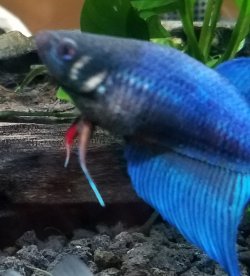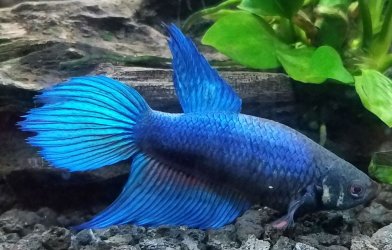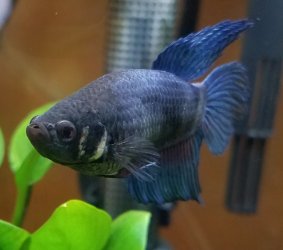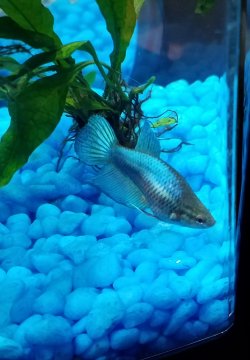dohaver
Fish Fanatic
- Joined
- Dec 29, 2017
- Messages
- 78
- Reaction score
- 8
I have notice for a week her gills have changed color from blue to silver. Her lower fin has a red hue to it. Her eyes a puffy and she is hiding on the bottom of the tank. She is eating. Clean conditioned water has been in a 2.5 bare bottom hospital tank for 2 days. No filter media running, just circulating. I have a heater set to 80. Please look at her pictures. I have API EM ERYTHROMYCIN. Or, should I treat the whole 10 GAL. planted tank with the ERYTHROMYCIN. I have 3 albino corys, 3 ghost shrimp, 1 Otto and my sick female Betta. Her normal body color is blue and now a shade of red is in her lower fin, her 2 bottom arms (Don't know what they are called),
please see pictures. Thank you.
please see pictures. Thank you.







